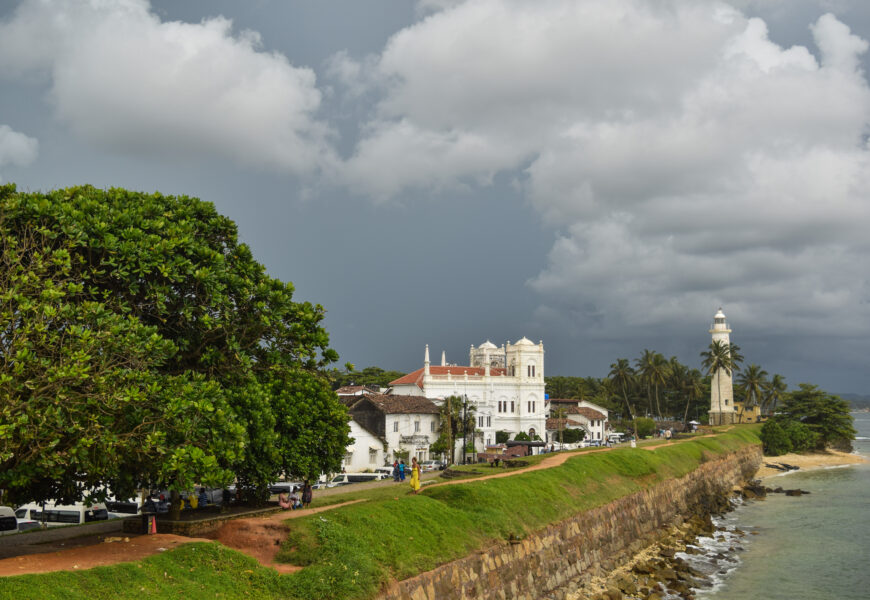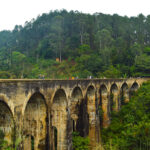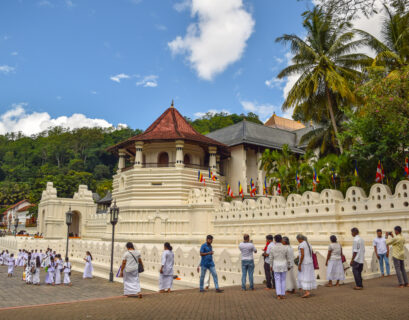If you’re a cricket buff, you probably would have dreamt of sitting on the ramparts of the Galle Fort and watch Sri Lanka play India. And if you could time travel then probably watch Chris Gayle score a triple century on Galle grounds. Galle is for a long, lazy day, spent in Cricket, beer, and Lankan munchies. You’d like to spend five days watching the game. You can go into the stadium when things get spicy, and venture out around the fort when they are not. And reserve evenings for long walks on the beach or through the old Portuguese town of Galle, hopping from one bar to the other, with a hope of catching on some of your favourite cricket stars.
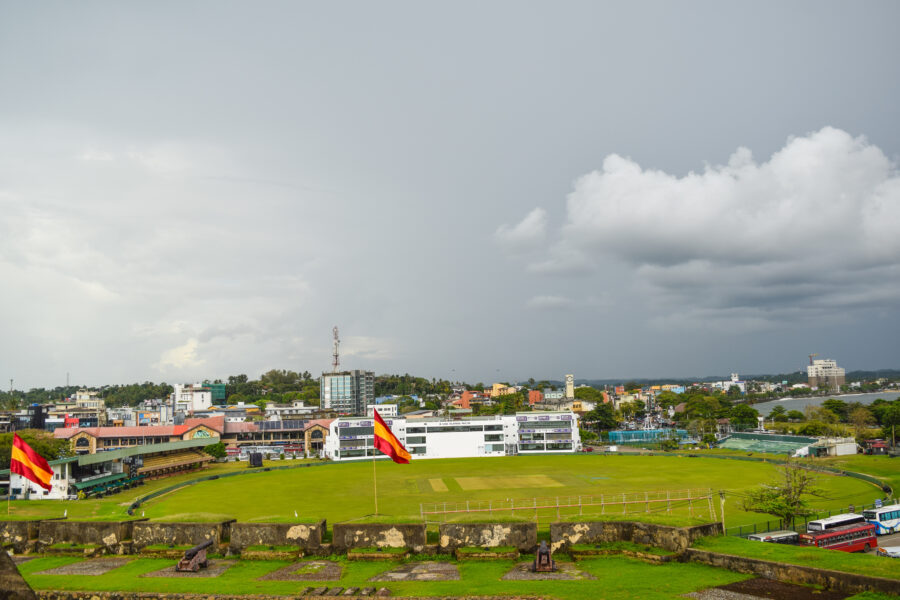

As I stood on the ramparts of the Galle Fort, I played this scene repeatedly. I wasn’t there for five days, rather a little less than a day. But even that short visit was enough to imagine what I wanted from Galle. I knew then that I’d have to plan another trip to live this dream of living one of the fondest sporting memories of childhood. Only a handful of cricket stadiums evoke such an attachment. But Galle finds a special mention. Perhaps it is because of the views of the ocean and the old town we lived on TV screens as camera zoomed out on the city.
And while cricket may have introduced me to Galle, my recent visit revealed more about Galle. The Galle Fort is a delicious microcosm of cultures, colonial histories, and thriving culinary hotspots. You can easily explore the Old Town in a single day, but you might want to allocate more time to check out more of the town’s delightful restaurants, cafés and boutiques, and take in the sunset from the historic fort walls.
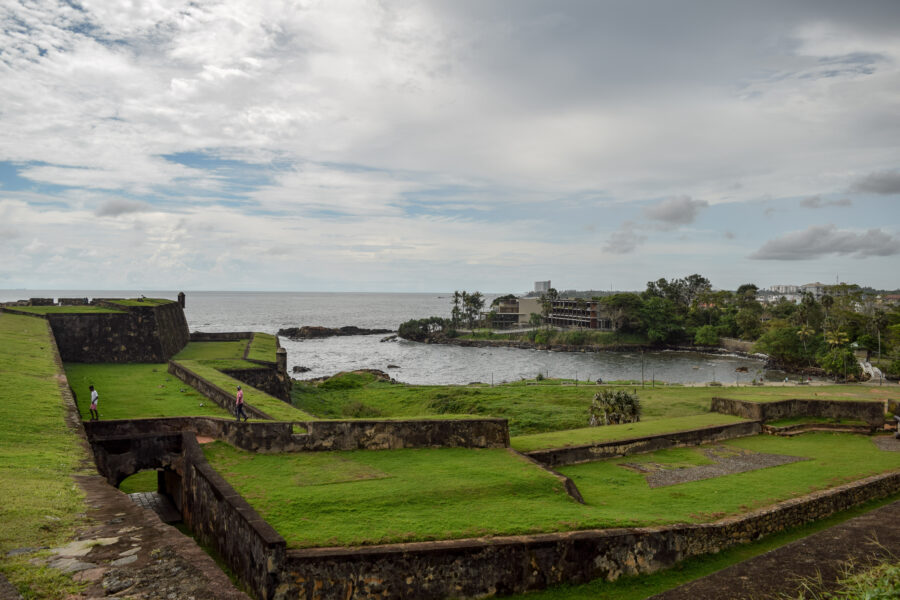
From the ancient cinnamon port to the Galle city
Galle’s history goes back to as early as 2000 BC when it emerged as the center point of the international cinnamon trade. Back then, Galle was a busy trading port, trading cinnamon with countries like Greece, Arab countries, and China.
The Portuguese landed here in 1505 when one of their ships bound for the Maldives, was blown off course and ended up in the harbour of Galle. It was they who gave Galle its name and built the Galle Fort. The Portuguese held their ground until 1640, when the Dutch launched a four-day naval assault and captured the fort. The fort was significantly expanded to its present form, under the Dutch rule. They reinforced its walls and added bastions, churches, houses, underground tunnels, and a grid of orderly streets.

History took another turn in 1796 when the Dutch conceded Galle to the British, a week after the British captured Colombo. The British made several additions to the Galle Fort, like closing the moat and building more houses, warehouses, a lighthouse, and gates.
The old town
The old city of Galle, tucked within the fort walls, is a charming mosaic of color, texture, and history. This enchanting quarter is what draws most visitors to Galle. The European colonizers built Galle —first the Portuguese, followed by the Dutch, and later the British. It still carries the distinct imprint of its colonial past. You can feel the European vibe in the cobblestone streets lined with weathered colonial houses.
The Galle fort area houses a working community with administrative offices, courts, cafes, shops, restaurants, hotels, and more. Many artists, writers, photographers, designers, and poets, call it home.

The old town walking tour
There are a plenty of tuk-tuk tours of Galle available. However, I’ll highly recommend taking a DIY walking tour of the old town.
You may start from the New Main Gate. The Northern Ramparts, and a trio of bastions built in 1620 by the Portuguese. In the center of these bastions is the relatively new Main Gate.
Northern Ramparts – Star, Moon, and Sun Bastions – These bastions were originally named after saints. The Dutch later renamed these in 1667 as the Star, Moon, and Sun Bastions. Together, they form the impressive Northern Ramparts of Galle Fort, and reflect both the military precision and symbolic flair of Dutch colonial architecture.
Towards the right of the Main (New) Gate, is the Moon Bastion with its Clock Tower. The Portuguese constructed this gate in the 16th Century as a tall gun tower.
Right next to it is the constructed in 1883, designed by Joh Henry Gues Landon. The clock tower stands as an icon of the Galle city.
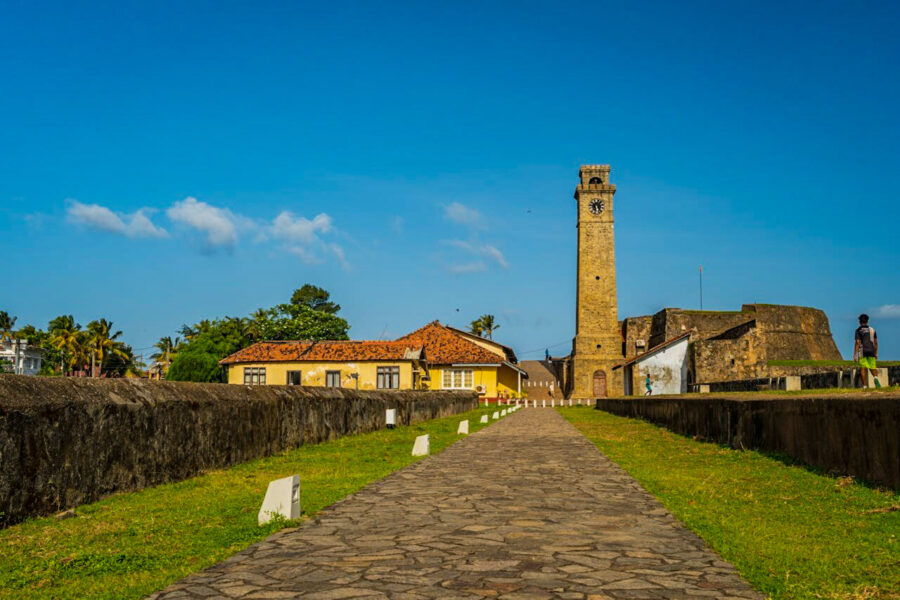
As you walk further towards the sea, you enter the star bastion. The Portuguese constructed the Star Bastion in the 16th century to help defend Galle Fort from mainland attacks. You can still see several cannon emplacements on the bastion’s two-tiered terraces—a reminder of its former military significance.
The next stop from the Galle Fort should be The Galle National Museum, oldest Dutch building in the fort, constructed in 1656. This old building houses exhibits from the Portugues, Dutch, and British periods of Sri Lanka. At a stone throw away distance is the stunning, white stoned Dutch Reformed Church. You can find some other relics like the Galle library, Galle post office, Galle maritime museum, and a beautiful Anglican Gothic Revival-styled All Saint’s Cathedral, on the same street.
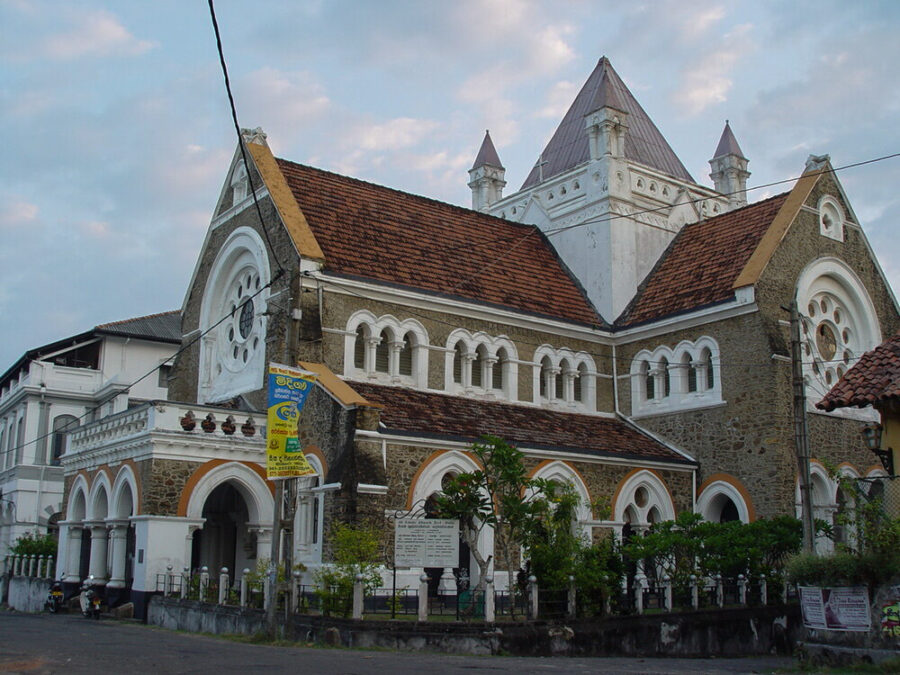
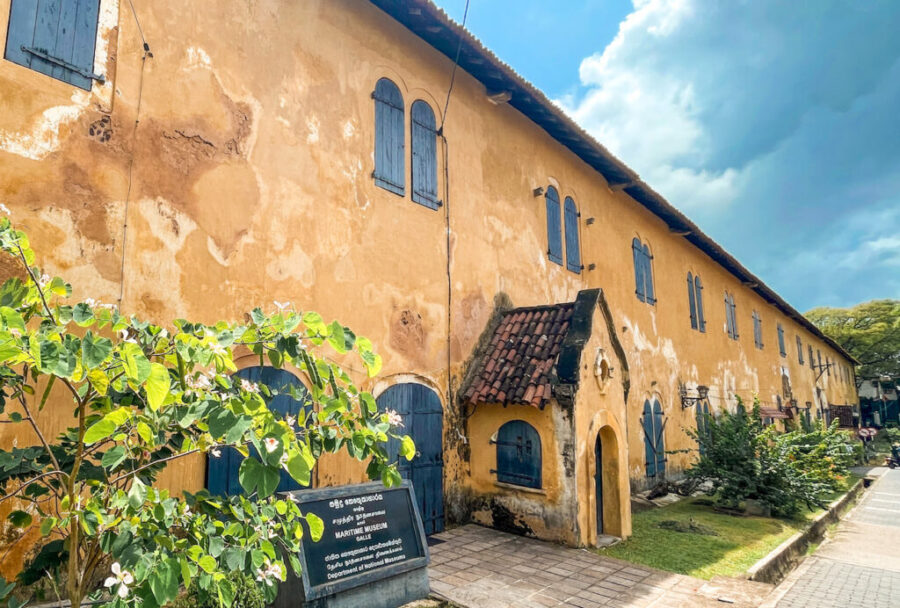
The old Dutch Hospital for lunch
Old Dutch Hospital is a large, old, renovated Dutch building with restaurants, cafes, and shops. The Dutch built the building in the 17th century, and it served as a hospital and smallpox research center. This old building with balconies on both sides, is a modern shopping and dining mall with eating places, jewelers, a spa, and small boutique shops. The Old Dutch Hospital has good lunch options like the A minute by Tuk-Tuk and Cannon.
Parawa and Pedler streets
Parawa Street is named after the “Parrua” community of fishermen who once lived in this part of Galle and who descend from South India. This part of Galle is lined with cafes, souvenir shops, bars, hotels, and boutiques. This is a place to sit down, and breathe in the crisp, salty air of Galle. Try the Galle Fort’s oldest coffee shop, Pedlar’s Inn Café, a stunning 250-year-old Dutch house, with an open courtyard. You can also try an authentic Italian restaurant, The pasta factory, for its handmade Italian recipes.
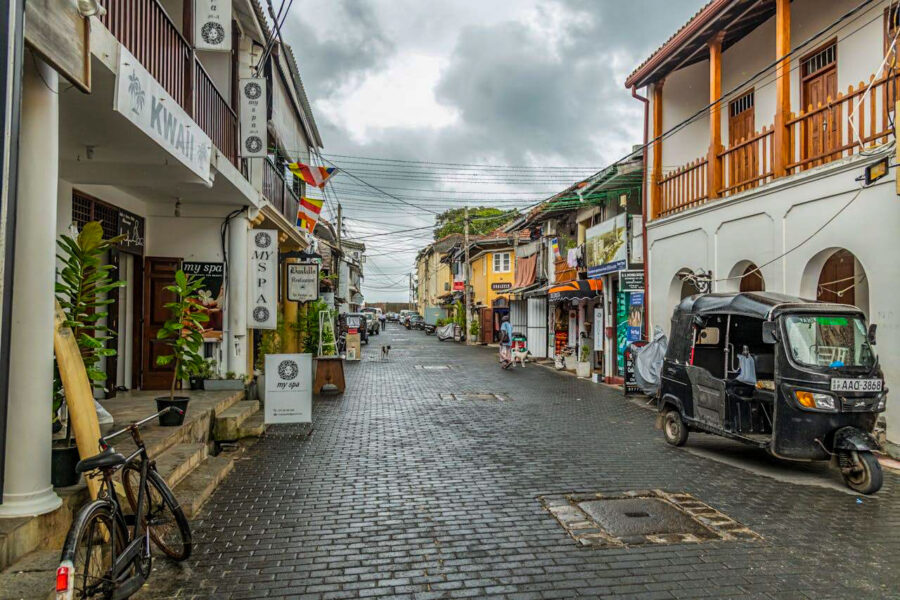
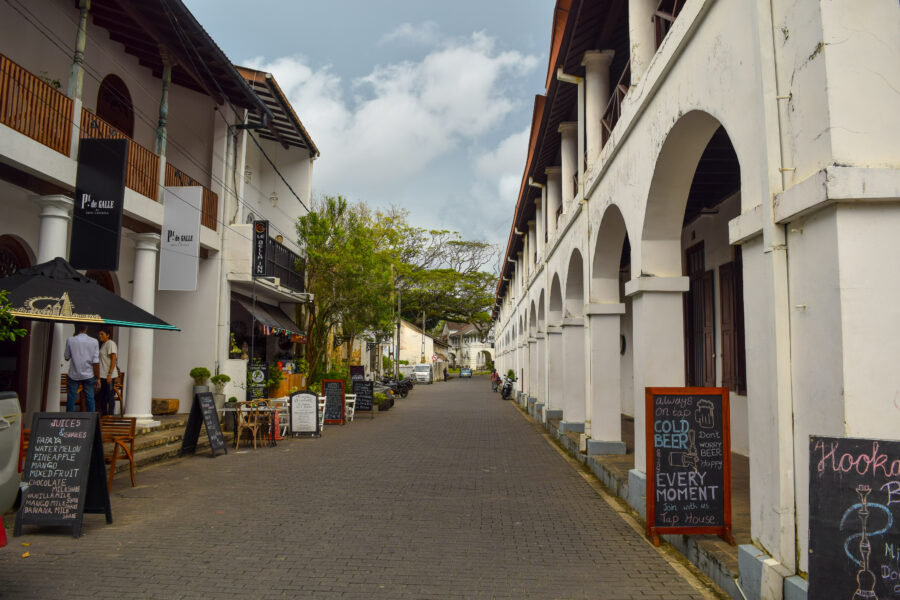

Galle isn’t a place that calls for a typical ‘to-do’ list. It is best explored slowly, on foot, where every corner reveals a story. It’s remarkable how layers of history, culture, and art are tucked into such a compact space, from Dutch-era architecture and cobbled alleys to vibrant galleries and charming cafés. At day’s end, the fort walls beckon — the perfect spot to pause and watch the sun melt into the sea. Whether you’re wandering its quaint alleys or savouring fresh seafood by the beach, Galle promises a travel experience rich in character, warmth, and timeless beauty.

